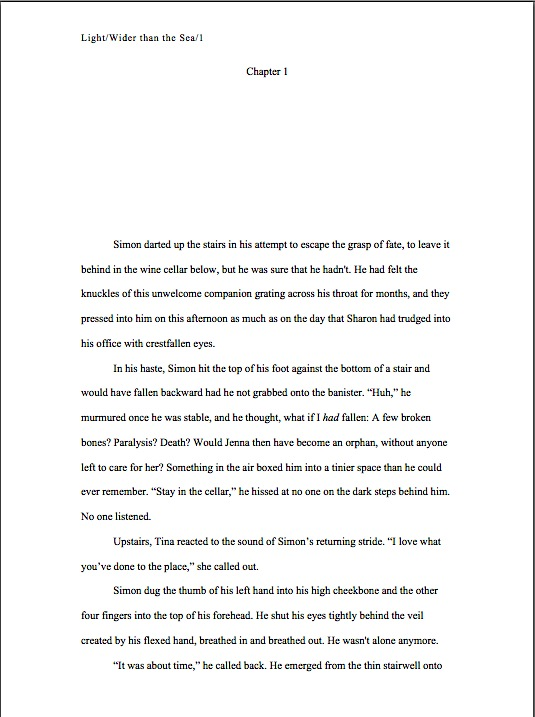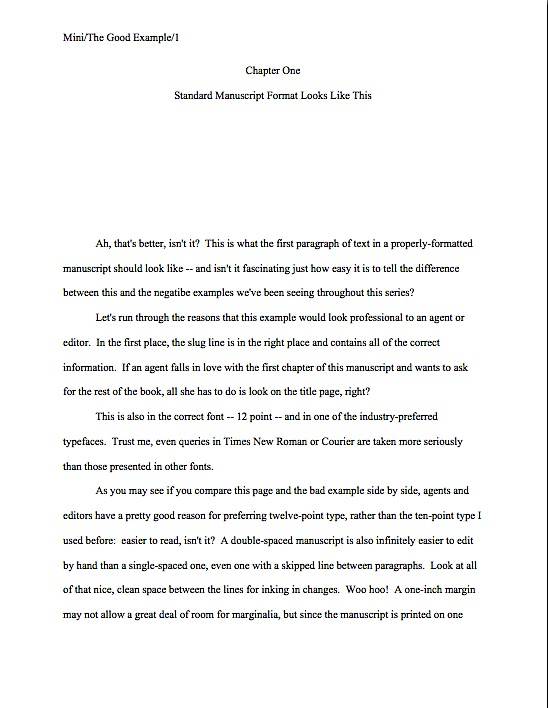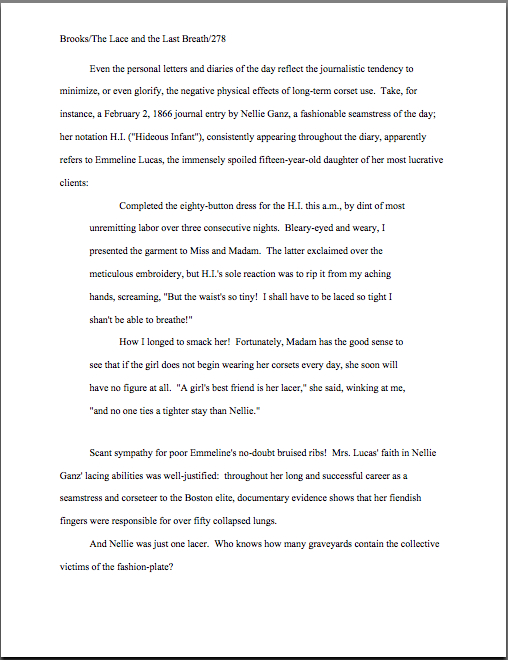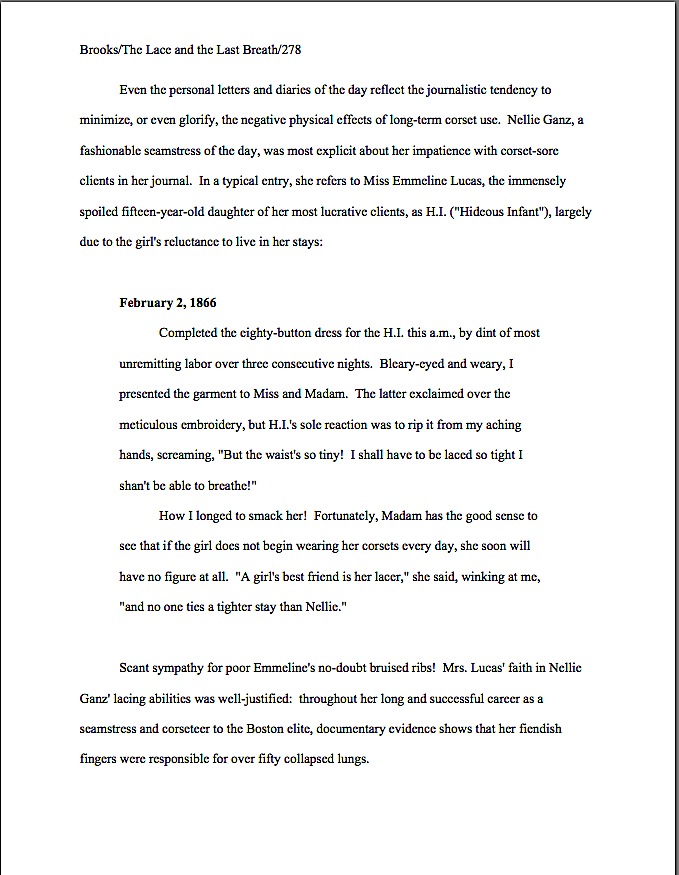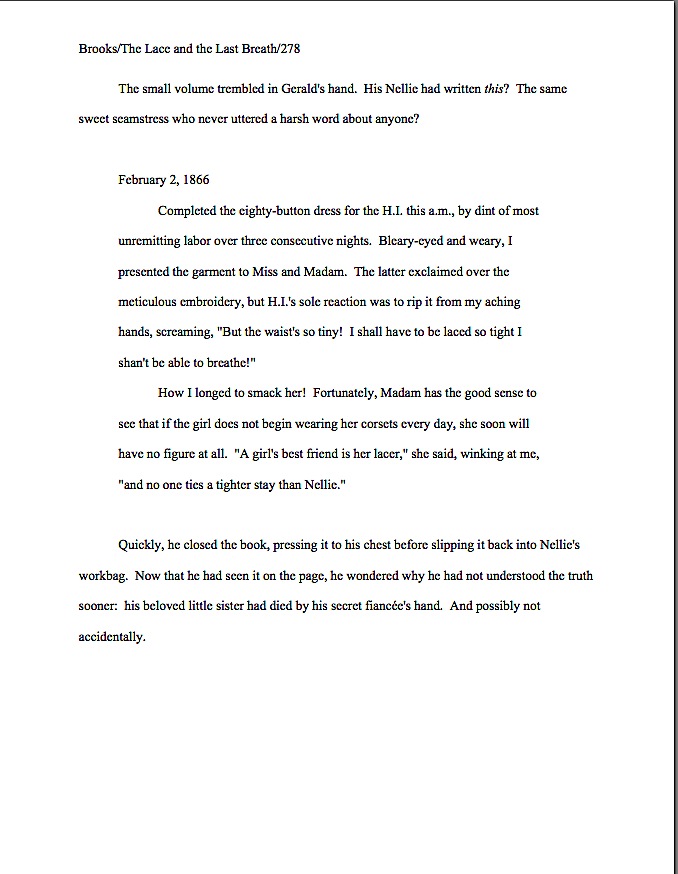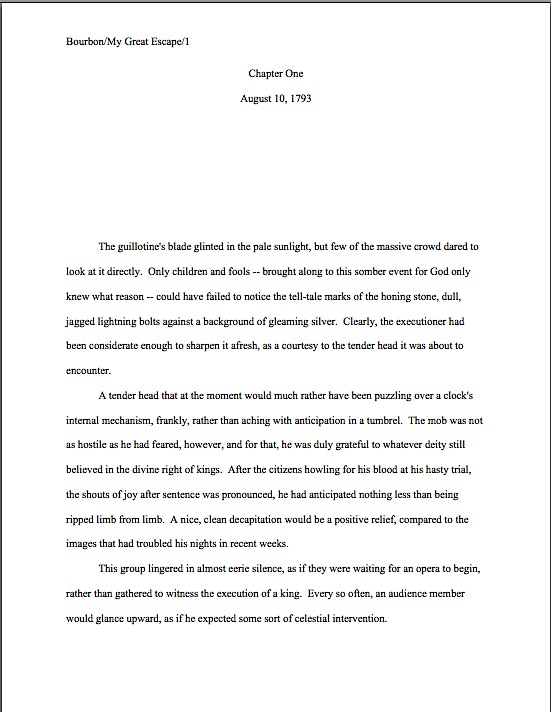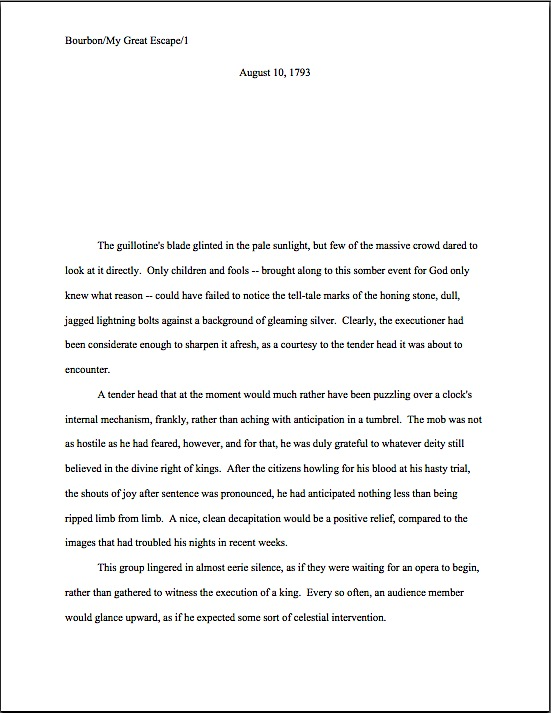
Every spring, I like to go on a media fast for a few days, just to reset my perspective: I eschew newspapers, television, radio, and yes, even my own blog. Instead of these shiny, frenetic distractions, I walk outside, breathe the fresh air, and bask in light that isn’t reflected from a screen. Then, refreshed, I can return to my work.
Normally, I wait until Seattle is warm enough for me to take those aforementioned walks without being bundled up to my nose in sweaters, jackets, and mufflers. This year, however, the muses were kind enough to provide me with tap on the shoulder and a murmured, “It’s time to go, sweetie.”
Actually, if I’m honest about it, their hint was more of a gigantic shove and a bellow of “Get a move on, doll!” that would have made the late and loud Ethel Merman wheel around in alarm, exclaiming, “What the heck was that?” But omen-watchers can’t be choosers, so out the door I went.
What happened, you ask? Well, at the end of last week, I logged into Facebook (where I have recently erected a fanpage, incidentally) to check in with some friends in Tokyo, as one does when natural and manmade disasters occur simultaneously. When I tried to post a comment, a brusque message informed me that the system had experienced a technical error. The dialogue box invited me to click on an ostensibly helpful link entitled Try Again.
That seemed like sensible advice: I clicked it once. The system then proceeded to post my comment 94 times, of its own accord. And frankly, what I’d had to say would have been interesting to even the most avid reader three or four times, at most.
But in the best tradition of false suspense, Facebook did not show me those 94 comments. Instead, it simply sent me back to my own homepage, as though nothing out of the ordinary had happened. So how did I find out about the infamous 94 at all? Because when I tried commenting on another friend’s page, up popped a genuinely nasty message saying that I was blocked from posting for some indefinite period of time, ranging (it said) anywhere from a few hours to a few days, because of my ongoing patter of (unnamed) malicious behavior annoying or abusive to other users.
What that behavior was, I was left to guess; the message merely referred me to a FAQ page. In the manner of badly-designed FAQ pages everywhere, it simply repeated verbatim what the message that had sent me there said. Grumbling, I went back to my friend’s page and did something that the harsh rebuke had not advised, but should have: I manually deleted 93 of those messages, one at a time. Because the system isn’t set up do mass deletions, this took almost 20 minutes.
Now, I could have taken this blatantly unfair series of events in any number of ways. I could have shaken my head over just how much time advancing technology manages to waste in all of our lives — as any aspiring writer trying to blandish a recalcitrant PC into printing a document in standard format (it’s easier on a Mac), unless the program’s designers happened to envision the problem one wants to solve, even the simplest change can eat up hours. I could also have wondered whether Facebook had invented this glitch on purpose, as an excuse to get rid of subscribers. I could even have thrown up my hands and concluded that the computers have become sentient — if not particularly intelligent — and are now turning on their masters.
But I’m an editor by trade. The very first words I uttered when I finally tracked down what the problem was: “94 posts that all say the same thing! That’s almost as repetitious as dialogue in the average submission.”
Hey, my assistant laughed when I said it. Shortly before I told her to take a long weekend and walked out the door myself, seeking a soothing walk in the rain, early spring flowers, and some peace from computer systems that have apparently decided the next step toward world domination is to create a class of unjustly accused computer outcasts.
Early in my walk, I had intended to use that anecdote as a springboard for a well-justified lecture about the dangers of replicating the extreme redundancy of everyday speech on the manuscript page, but by the time I returned home, rivulets streaming from my hair, the muses had talked me into a sneakier way to make a literary point. Ahem: did you catch the rather fundamental storytelling error I deliberately inserted into that story?
Hint: it happens in comic manuscripts so often that our old pal, Millicent the agency screener, automatically twitches a little at the very sight of it.
If you flung your hand in the air and yelled, “I know, Anne! The narrative had another character, your assistant, laugh as a means of demonstrating that a joke was funny,” you already have an A for the day. If you added, “And the assistant character didn’t appear in the story until she was needed to provide the laugh track,” make that an A+.
What about this narrative trick sets Millie a-twitching, you ask? To a professional reader, it’s a telltale sign of authorial insecurity: if the writer were positive that the joke were really funny, Millicent reasons, why would he think the reader needed a prompt to laugh?
Comedic insecurity’s shows up in a few other twitch-inducing manifestations on the manuscript page. I’ve included specimens of four kinds in the following sterling piece of prose — and, just for kicks, another common non-humor pet peeve. See if you can spot them all.
Melvyn glanced stealthily over his shoulder. No one had ever caught him hacking into someone else’s account to post endlessly redundant messages; he wasn’t even sure what dire punishment would await a brave soul caught doing such a thing. Trembling, he reached a hairy forefinger toward the ENTER key.
“Hey, geek.” Clarice came bouncing into the room, a stack of invoices wedged under her arm. “You hiding from the boss? She’s on a fourteen-apple rampage.”
Melvyn chuckled. Arnette was always on some kind of rampage, so he and the other staffers had come up with a rating scale like the one used for diamonds: the weightier her mood, the bigger the number of carats. Bill had just gotten engaged at the time, so solitaire classifications were much discussed around the office. Then some office wag decided that carats weren’t funny enough and changed them to apples. A fourteen-apple rampage must have been impressive to behold.
If you guessed that one of the problems was that the explanation in the last paragraph was boring enough to send Millicent’s weary eyes wandering morosely toward the window to contemplating the sweet spring day outside, well, you have a point. Like so many inside jokes ripped from real-life situations and reproduced faithfully on the page, this bit of office humor falls a bit flat.
A word to the wise: jokes like this should be test-driven verbally before you even consider typing them into your manuscript — and driven by people who do not know anything about the original context of the joke. If total strangers do not respond with mirth, chances are that, as the saying goes, you had to be there in order to find it funny.
Millicent was most assuredly not there. Need I say more?
What else is wrong with this bit of failed office humor? Did you notice that the text laid no foundation for the joke? Had an earlier scene featured some reference to the carat rating system, Clarice’s changing it to apples might have been spontaneously funny. Heck, there could be a running joke where each staffer substitutes his or her own favored fruit, vegetable, or legume.
Okay, so maybe you still would have had to be there. But there’s no denying that the last paragraph was funnier because it contained the word legume.
Unexpected words can often liven up an otherwise so-so bit of humor. As we saw in the example above, the opposite is also true: uninspired word choices can flatten even a funny situation on the page. And when the situation isn’t all that funny in the first place…
Well, I don’t think any of us want to be there, do we?
I spot a few clowns with their oversized gloves in the air. Yes, Bozo? “But Anne,” the red-nosed one points out, and who am I to deny the request of someone in a rainbow-hued fright wig? “How do we know that the author of that example hadn’t set up the joke earlier in the book? This is just an isolated excerpt; we really don’t know anything about context.”
Good point, but would you mind not honking that ooga horn in my face? Thank you so much. Something in the passage itself told me as clearly as if the author had hoisted a ten-foot banner reading FIRST WE’VE HEARD OF THIS over the page that the text had been a trifle light on set up. Any guesses what it was?
If you immediately started jumping up and down, shouting, “If a foundation had been laid for that joke, the turgid paragraph-long explanation would have been unnecessary,” your cup runneth over with editorial virtue. Properly set-up humor does not require further explanation — in fact, telling someone who didn’t laugh why a joke was funny is one of the surest ways to kill any residual humor that might have been lingering in the atmosphere.
Is that plain, or shall I re-explain it? Over and over again, until you wish I had never brought it up in the first place?
On the manuscript page, explanation after the fact is one of the surest signs that the writer has doubts about the joke. “If she thought that it could stand alone,” Millicent mutters, “why would she have slowed the scene down with a paragraph of explanation. Next!”
In response to what half of you just thought: yes, failed humor is often an instant-rejection violation, at least within the first few pages of a submission — and not merely because it’s a high dive that ended in a belly flop. It’s a voice issue, and a marketing one. While the genuinely funny is quite refreshing to find in the middle of a stack of manuscripts, if only because of its rarity, jokes that don’t work tell professional readers that the writer is not yet closely in tune with his audience.
His intended reading audience, that is, not just first readers he may have plucked from his doubtless wide and admiring acquaintance to serve as first readers. It’s an unavoidable reality of comedy writing that people who know and love the author are far more likely to laugh at his jokes than total strangers.
Trust me, Millicent has heard, “But it made my mom/husband/wife/sibling/coworker howl with laughter!” many, many times; to the pros, it’s simply irrelevant. No matter how much a joke or situation may have ‘em rolling in the aisles of your favorite dispenser of alcoholic beverages, if it doesn’t make a stranger laugh as it is written on the page, it’s likely to be a liability at submission time.
Okay, writers without comedic aspirations, your time has come: what was the other common Millicents’ pet peeve? Hint: it appeared in the following sentence.
Then some office wag decided that carats weren’t funny enough and changed them to apples.
Give up? It’s that pesky then, used in a manner that is actually rare not to find in a novel or memoir submission. (Again, don’t underestimate how much sheer repetition can contribute to a professional reader’s negative reaction to a manuscript gaffe. You try seeing the same narrative device in 75 different submissions in a week, and you might well start twitching, too.)
Okay, so that’s a tiny pet peeve — but as we have seen throughout this series, a series of small missteps can add up to rejection fairly quickly. Especially if several of them have chosen to congregate on page 1.
But why might this innocent-seeming word have begun annoying the pros in the first place? An editorial antipathy toward redundancy, mostly: when used in the way we see it above, to indicate that what came next occurred after what’s just been described, then — and its even more popular sibling, and then — are technically unnecessary. In English prose, unless the reader is specifically told that time is not running in a linear manner, events described are assumed to have occurred in the order they appear on the page.
That being the case, why is it necessary to tell the reader that the office wag’s decision came after the carat joke had spread throughout the office? Does the reader have any reason to think that it didn’t happen next?
Instead, why not reserve then to introduce turns of event that might genuinely startle the reader? Millicent is far less likely to object to it as the clarion call of an unexpected sudden plot twist than as a simple and unnecessary notation of the passage of time. Take a gander:
Bill had just gotten engaged at the time, so solitaire classifications were much discussed around the office. Then in the middle of the fifth straight day of coffee-break chat on the subject, Arnette swept into the employee lounge, wielding a roll of duct tape. She slapped a piece across every kisser that so much as uttered the word carat. Thereafter, we were careful to use euphemisms.
Didn’t see that coming, did you? That’s a surprise more than worthy of being introduced to Millicent by then.
Yes, Bozo? You honked your horn? “I wouldn’t really mind Millicent’s objecting to my use of then, or even not finding my jokes funny; I get that my humor might not be everyone’s proverbial cup of tea. I also get that agency screeners read a lot of submissions in a day. What I object to is not being told what specifically triggered the rejection. How hard would it be to scrawl a single sentence fragment in the margins at the point where they stopped reading, so the submitting writer would know why the manuscript was rejected? Or even just make a mark on the page, so the writer would know where the screener stopped reading?”
I have to say, I’m with you on this one, campers: a simple checklist of the most common rejection reasons would take Millicent very little time to fill out. It would be even speedier to print up a few hundred thousand stickers reading, “Show, don’t tell!” or “Where’s the conflict?” so she could slap ‘em on the manuscript page at the precise point where her pet peeve got to her. At least then, the writer could learn enough from the submission experience to improve the manuscript before trying again.
But that, alas, is not the reality of submission in the current hyper-competitive literary environment. We could expend a great deal of energy resenting that the process is set up not to help aspiring writers learn how to get better at submission, but for Millicent to be able to reject as high a proportion of requested materials as possible, to narrow the masses down to the happy few her boss has time to read and consider.
I don’t know about you, but I would rather invest my energies in teaching you to rid your submissions of the most frequent red flags. For the rest of today’s post, I shall concentrate on the rejection reasons that would make the most sense for agency screeners to rubber-stamp upon submissions: ubiquitous problems that are relatively easy for the writer to fix.
If she knows to fix them, that is.
One of my favorite easily-fixed common problems: a manuscript aimed at an adult audience that has a teenage protagonist in the opening scene. If the teenager is the focus of page 1, Millicent is prone to say, “Oh, this is YA — the writer must think that we represent it. Next!”
Remember, there is no easier rejection than a book category that an agency does not handle. (That’s one reason that most agencies prefer query letters to contain the book category in the first paragraph, FYI: it enables agency screeners to reject queries about types of books they do not represent without reading the rest of the letter.) In an agency that represents both, the submission would be read with a different target market in mind, and thus judged by the wrong rules.
“Wait just a cotton-picking minute!” I here some of you out there murmuring. “This isn’t my fault; it’s the screener’s. All anyone at an agency would have to do to tell the difference is to take a look at the synopsis they asked me to include, and…”
Stop right there, oh murmurers, because you’re about to go down a logical wrong path. As we discussed earlier in this series, you can’t legitimately assume that Millicent is going to read your synopsis prior to reading your submission — or indeed at all. Nor is she even remotely likely to have your query letter at her elbow when she begins your manuscript, so she may refresh her recollection of what the book is about. As an unfortunate but direct result, it’s never safe to assume that the screener deciding whether your first page works or not is already familiar with your premise.
Why? Limited time. Millicent needs to figure out whether the submission in front of her is a compelling story, true, but she also needs to be able to determine whether the writing is good AND the style appropriate to the subject matter. An adult style and vocabulary in a book pitched at 13-year-olds, obviously, would send up some red flags in her mind.
Or even in a book she assumes is aimed at 13-year-olds. For those of you who write about teenagers for the adult market, I have a bold suggestion: make sure that your title and style in the opening pages reflect a sensibility that is unquestionably adult, so your work is judged by the right rules. This can be genuinely difficult if your narrator is a teenager.
Which brings me to another easily-fixed rejection reason: narration in a kid’s voice that does not come across as age-appropriate. This issue crops up all the time not just in YA, but in books about children aimed at adult readers — as a general rule of thumb, if your protagonist is a pre-Civil War teenaged farmhand, he should not speak as if he graduated from Dartmouth in 2002. Nor should a narrator who is a 6-year-old girl wield the vocabulary of an English Literature professor.
Oh, you may laugh. Care to guess how many novels like that the average Millicent sees in a year?
Usually, though, the misfit between narrator and voice is not quite so obvious. Often, teenage protagonists are portrayed from an adult’s, or even a parent’s, point of view, creating narrators who are hyper-aware that hormones are causing their mood swings or character behavior apparently motivated (from the reader’s point of view, anyway) solely by age, not individual personality or the ambient conditions. But teenagers, by and large, do not think of themselves as moody, impossible, or even resentful; most of them, when asked, will report that they are just trying to get along in situations where they have responsibilities but few rights and little say over what they do with their time and energy.
Yet screeners are constantly seeing openings where teenage girls practice bulimia simply because they want to fit in, teenage boys act like James Dean in REBEL WITHOUT A CAUSE, teenage characters flounce off to their rooms to sulk — and everyone between the ages of 10 and 19 habitually says, “Whatever,” and rolls his or her eyes on the slightest provocation. Yes, some teenagers do these things, undoubtedly, but in novels, these behaviors have been documented so often that they come across as clichés. Compounding the problem: teenage characters and narrators who diagnose these activities as an adult would are accordingly rife.
That might not bug a 45-year-old professional reader very much, but agency screeners and editorial assistants tend to be really young: many weren’t teenagers all that long ago. Sometimes, they are still young enough to resent having been pigeonholed in their recent youths, and if your manuscript is sitting in front of them, what better opportunity to express that resentment than rejecting it is likely to present itself?
So do be careful, and make sure you are showing Millicent something she doesn’t see twenty times per week. When in doubt, take a long, hard look at your teenage characters and ask yourself, “Is this kid continually emitting martyred signs because of what’s going on, or because of who he is as an individual? Or — and I need to be honest here — is he doing this simply because this is how I think teenagers in general act?”
Those questions are worth acting with any character who happens to be a member of a commonly-stereotyped group (“Are all of the pretty characters in my book dumb, and the homely ones smart?”), but perhaps because so many first-time novelists of books about teens are the parents of same, Millicent tends to be especially sensitive to stereotyping of the young. And I have to say, I’m with her on this one: the best opening with a teenage protagonist I ever saw specifically had the girl snap out of an agony of self-doubt (which could easily have degenerated into cliché) into responsible behavior in the face of a crisis on page 1. To submission-wearied professional eyes, reading a manuscript where the teenaged protagonist had that kind of emotional range was like jumping into a swimming pool on a hot day: most refreshing.
One of the most common ways to tactics up a teenage scene in the past is an opening including quotes from song lyrics. Yes, this can be an effective way to establish a timeframe without coming out and saying, hey, reader, it’s 1982, but it is also very, very overused. I blame this tactic’s use in movies and TV: in the old days, soundtracks used to contain emotionally evocative incidental music, but in recent years, the soundtrack for any movie set in the 20th-century past is a virtual replica of the K-Tel greatest hits of (fill in timeframe), as if no one in any historical period ever listed to anything but top 40.
I’m fairly confident, for instance, that there was no period in American history where dance bands played only the Charleston, where every radio played nothing but American Pie, or every television was tuned to THE ED SULLIVAN SHOW. Yes, even when Elvis or the Beatles appeared on it. Writers are creative people — don’t we owe it to ourselves as a group to mix it up a bit more?
Other than ubiquity, there are other reasons that agents and their screeners tend to frown upon the inclusion of song lyrics in the opening pages of a book. Unless the song is within the public domain — and the last time I checked, Happy Birthday still wasn’t, so we are talking about a long lead time here — the publisher will need to get permission from whoever owns the rights to the song in order to reproduce it.
Translation: song lyrics on page one automatically mean more work for the editor. And possibly expense. Think that will make the book harder or easier for Millicent’s boss to sell?
Also, one of the benefits of setting a sentiment to music is that it is easier to sound profound in song than on the printed page. No disrespect to song stylists, but if you or I penned some of those lines, we would be laughed out of our writers’ groups. For this reason, song lyrics taken out of context and plopped onto the page often fall utterly flat — especially if the screener is too young to have any personal associations with that song.
Yes, that makes me feel rather old sometimes, too.
It is unclear whether the narrator is alive or dead started cropping up on a lot of agents’ pet peeve lists immediately after THE LOVELY BONES came out. Ghostly narrators began wandering into agencies with a frequency unseen since the old TWILIGHT ZONE series was influencing how fantasy was written in North America on a weekly basis. And wouldn’t you know it, the twist in many of these submissions turns out to be that the reader doesn’t learn that the narrator is an unusually chatty corpse until late in the book, or at any rate after the first paragraph of the first page.
Remember what I was saying the other day about Millicent’s not liking to feel tricked by the early pages of a submission in to thinking the story is about something that it isn’t? Well…
I’ll leave you to ponder the possibilities. I’m off to have dinner with a sulky teenager who prattles on about peer pressure, a child who speaks as though she is about to start collecting Social Security any day now, and a fellow who may or may not have kicked the bucket half a decade ago. Honestly, if agents and editors would only recognize that we writers are merely holding, as ’twere, the mirror up to nature, all of our lives would be infinitely easier.
Insert eye roll here. Followed by a nice, long blast on Bozo’s horn, just in case anyone didn’t get that the last suggestion was a joke. Keep up the good work!



















